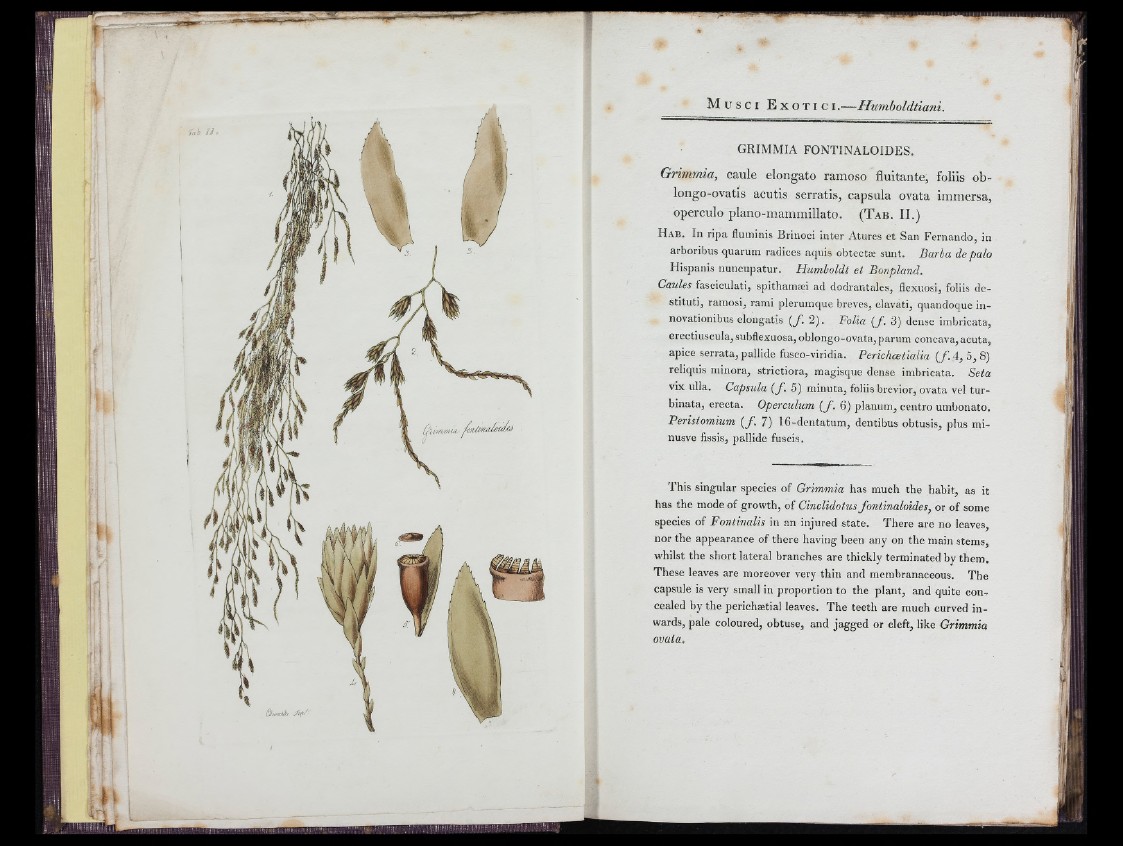
’l..h ¡1
a .
GRIMMIA FONTINALOIDES.
G rim m ia , c au le e lo n g a te ram o so flu ita n te , foliis ob-
lo n g o -o v a tis a cu tis se rra tis , cap su la ovata im m e rsa ,
o p e rcu lo p la n o -m am m illa to . (T a b . I I .)
H a b . In ripa fluminis Brinoci inter Atures et San Fernando, in
arboribus quarum radices acjuis obtectee sunt. Barba de palo
Hispanis nuncupatur. Humboldt et Bo/ìpland.
Caules fasciculati, spithamaei ad dodrantales, flexiiosi, foliis destituii,
ramosi, rami plerumque breves, clavati, quandoque in-
novationibus eloiigatis [ f . 2). Folia { f. 3) dense imbricata,
erectiuscula,subflexuosa,oblongo-ovata, parimi concava,acuta,
apice serrata, pallide fusco-viridia. Perichcetialia ( / . 4, 5, 8)
reliquis minora, strictiora, magisque dense imbricata. Seta
vix ulla. Capsula ( f . 5) minuta, foliis brevior, ovata vel tu rbinata,
erecta. Operculum ( / . 6) planum, centro umbonato.
Peristomìum { f . 7) 16-dentatum, dentibus obtusis, plus mi-
nusve fissis, pallide fuscis.
This singular species of Grimmia has much the habit, as it
has the mode of growth, of Cindidotus fontinaloides, or of some
species of Fontinalis in an injured state. There are no leaves,
nor the appearance of there having been any on the main stems,
whilst the short lateral branches are thickly terminated by them.
These leaves are moreover very thin and membranaceous. The
capsule is very small in proportion to the plant, and quite concealed
by the perichaetial leaves. The teeth are much curved inwards,
pale coloured, obtuse, and jagged or cleft, like Grimmia
ovala,